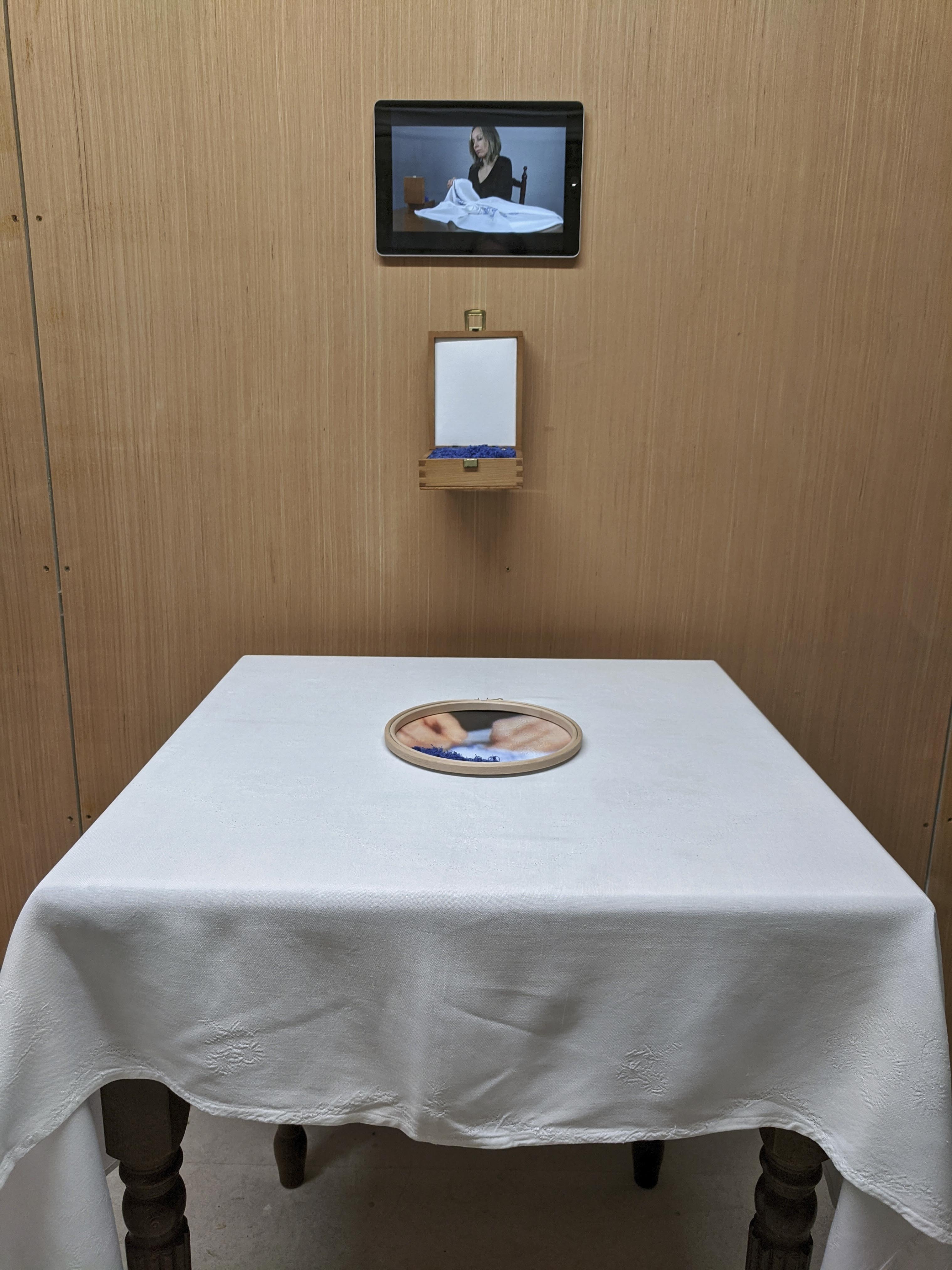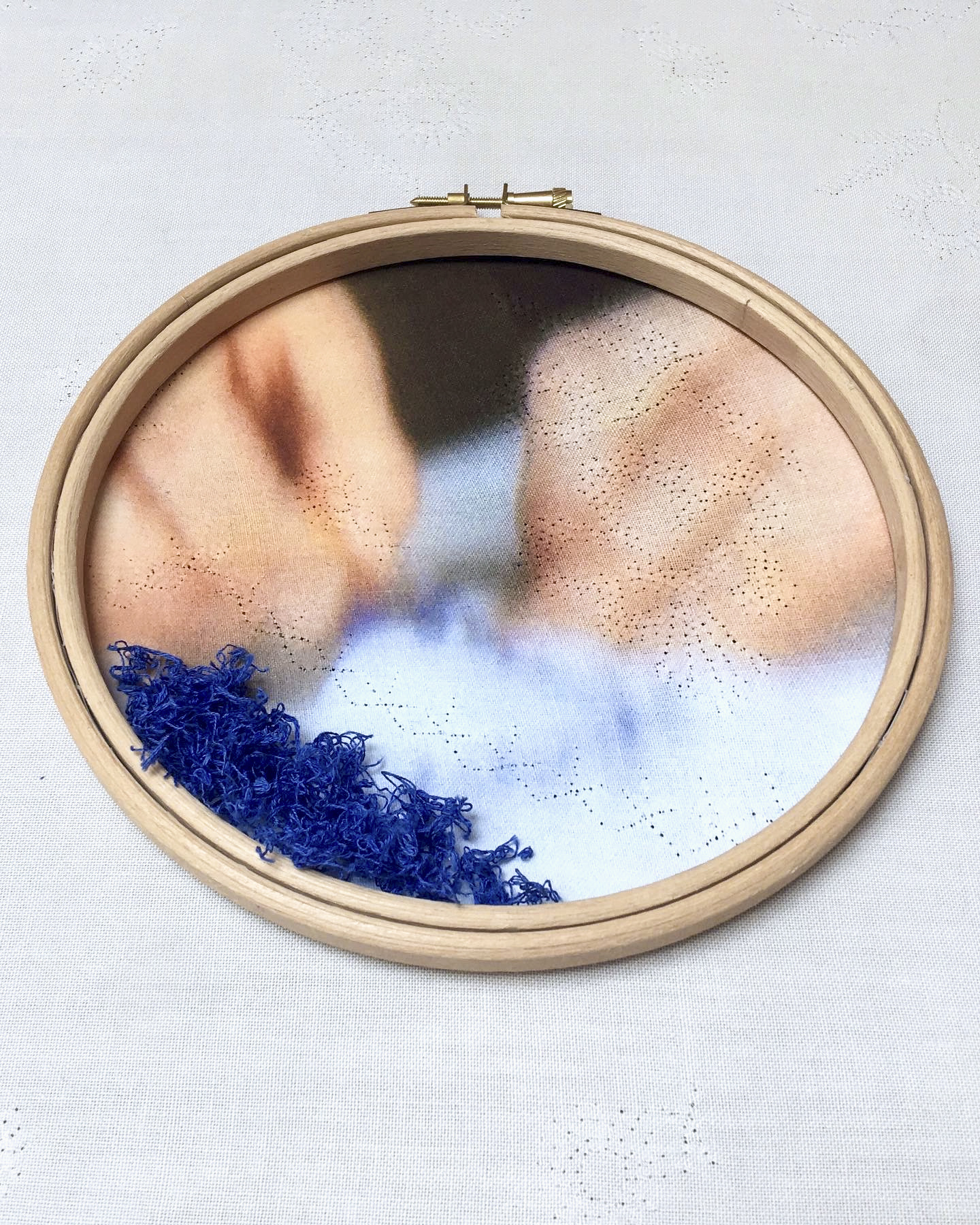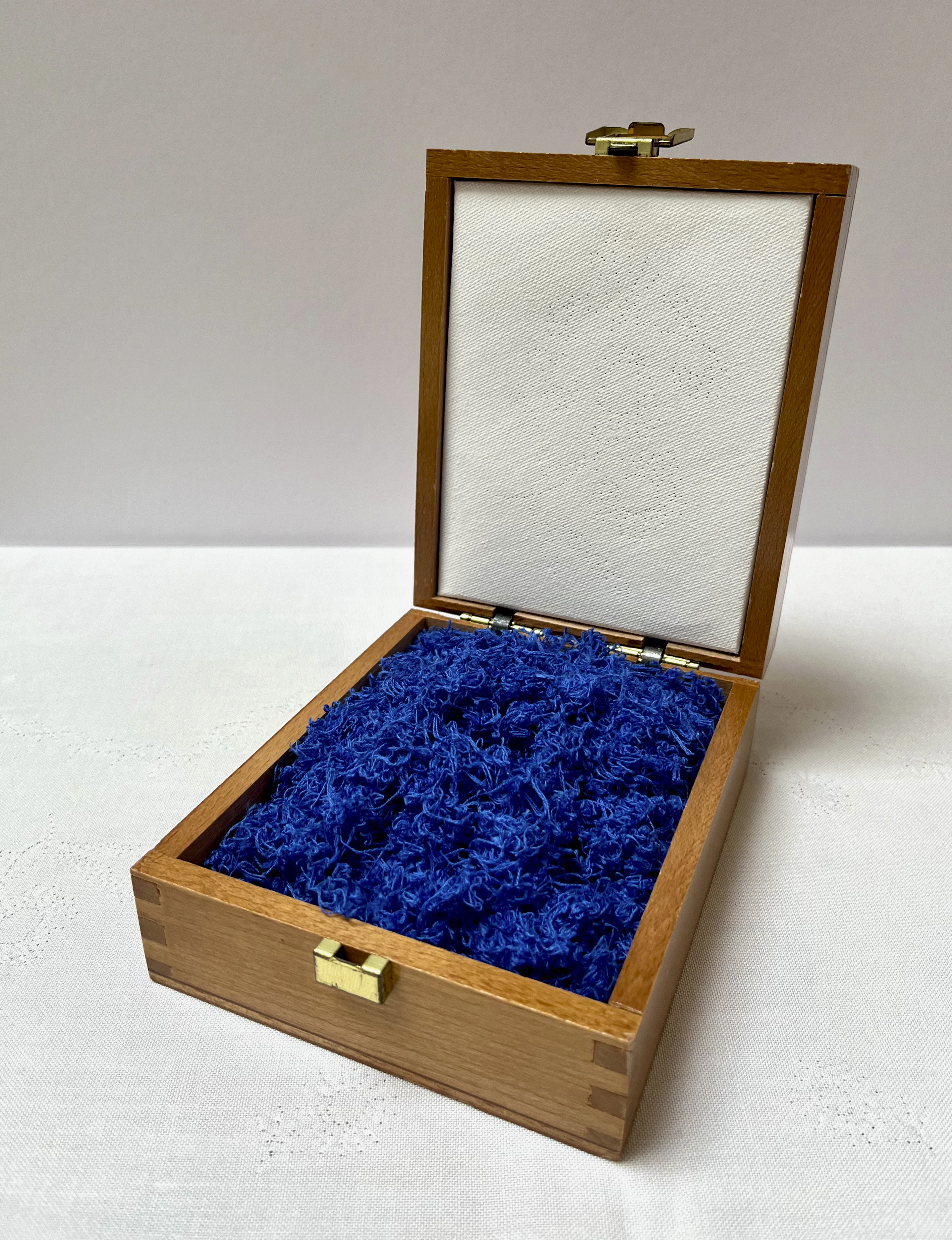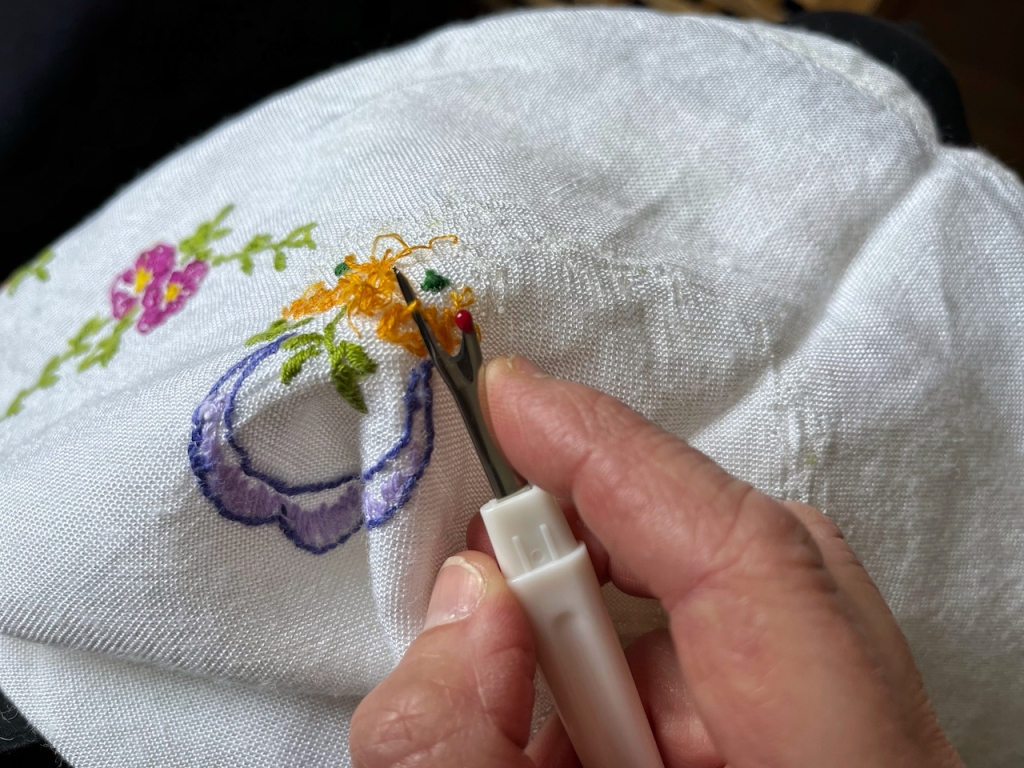


Installation; video and mixed media, 2020-2022. See the video here
The original installation with video projection and sound was developed during my residency at Roca Umbert, a former textile factory converted into an arts centre located in Granollers, Barcelona, Spain, 2020/2021. Recently exhibited at Saltaire Arts Trail



“For millennia women have sat together spinning, weaving and sewing” – Elizabeth Wayland Barber (Women’s work, the first 20,000 years)
This installation is a personal response to the history of the former textile factory Roca Umbert. It takes as its starting point a very specific place and context; a sewing room, (“El cosidor”) created in the 1950s for the single female workers of the factory where they could go after work to learn to sew and embroider as well as other domestic skills, in preparation for married life.
“Invisible threads” takes the idea of this sewing room as a communal space where personal narratives developed and were interwoven into the textiles the women made for their future homes. Exploring the idea of the narratives and memories a piece of fabric can hold and evoke in us, together with the close relationship between women and cloth throughout history, this work records the process of “un-embroidering” in an attempt to understand my personal connection with these narratives, but also to make visible the invisible threads that connect us on a universal level.
Women have worked with cloth for centuries, spinning, weaving, sewing; across cultures these activities have often been carried out, whether for necessity or for pleasure, together with other women in shared spaces. In this piece, however, I work alone, yet it is a dialogue between me and the thread, and therefore by extension, between me and the hand that sewed it; between the present and the past. As I unpick the stitches I’m conscious of the pattern of movement that unknown hand followed. Undoing that hand’s work may seem a violent and destructive act yet with every unpicked stitch I discover the hidden process behind that work and I connect with every detail of that process in a desire to make visible that which is hidden. Referencing the Greek myth of Penelope, who “unwove” the cloth she was making in an attempt to take control of her situation and keep her suitors at bay whilst waiting for her husband Odysseus to return, the piece considers the act of undoing as a creative act in itself.
In its original format, the video of this laborious yet meditative process was projected onto the “un-embroidered” tablecloth while a separate sound piece coming from the box of unpicked threads emitted a series of personal anecdotes and memories related to cloth told by different women connected to my present.
Through this process of undoing the hand embroidered pattern and returning the tablecloth to its blank state, I am also questioning where such memories are held and exploring our attempt to hold on to them through our attachment to personal objects that act as prompts, allowing us access to moments in time that we fear might otherwise become lost. The stitches are removed yet the memory of them remains in the small holes they have left behind in the cloth, a record of their passing.
This process of separation of thread from cloth invites the viewer to reflect on the stories a simple piece of cloth can hold, whether it be through personal anecdotes connected to its use, or the very process of its creation, work so often overlooked and unrecognised. The piece reflects on the traditional role of the woman as homemaker; responding to a desire to carefully and intentionally unpick that role and in so doing make visible the construction and deconstruction of that narrative. The small holes that remain in the cloth represent the memories and stories of women across time and cultures that somehow I feel connection with as part of my heritage as a woman.
“Invisible threads” was recently exhibited at Saltaire Arts Trail, where it was shown in a domestic space and where I also gave a performance of the piece, unpicking a locally sourced tablecloth over the course of the weekend.





“…Me he acordado de un mantel que tengo aquí en casa, bueno un mantelito…que antes se llamaba de té, que lo ponía mi madre el domingo a la tarde que era cuando venían mis tías y estaban también mis primos, y nos reuníamos toda la familia…y merendábamos y es un recuerdo que tengo tan bonito porque estábamos todos juntos…”
Aurora
[Translation: “I’m reminded of a tablecloth that I have here at home, well a cloth … that used to be called a tea tablecloth, that my mother would put out on Sunday afternoon, which was when my aunts would come and my cousins would also be there, and the whole family would get together … and we would have tea and it is such a lovely memory to have because we were all together...”]
“…Estas prendas tienen para mí un especial sentido porque son del ajuar de mis abuelos y deben tener unos entre 103 y 105 años de antigüedad. Es un algodón super resistente que lavados tras lavados permanece perfecto y muy buen estado y que llama la atención por sus costuras, la manera que está tejido…A mí me gusta mucho guardarlo porque es como un testimonio del tiempo…”
Eva
[Translation: “These garments have a special meaning for me because they are from my grandparents’ trousseau and must be between 103 and 105 years old. It is a super resistant cotton that wash after wash remains perfect and in very good condition and that draws your attention to its seams, the way it is woven … I really like keeping it because it is like a testimony of time”]
“…Cuando mi hija era pequeñita teníamos una funda de almohada de cuadritos rojo y blanco que estaba deshilachada por un lado y mi hija antes de irse a dormir la primera cosa que pedía era la pipa y el coixí, y si no había ni pipa ni coixí no se podía dormir. Y hasta incluso una vez mi suegra que la vio allí y la vio deshilachada la cosió y yo por la noche la tuve que deshacer porque claro mi hija cosida no la quería. Se pasaba las flequitas por la cara, cogía la almohadita y se ponía el chupete y se quedaba dormida en un momentito…”
Gloria
[Translation: “When my daughter was little we had a red and white checkered pillowcase that was frayed on one side and my daughter before going to sleep the first thing she asked for was her dummy and the pillow, and if there was no dummy nor pillow then she wouldn’t be able to sleep. And even once my mother-in-law, who saw it there and saw that it was frayed, mended it and at night I had to undo what she had sewn because of course my daughter did not want it mended. She would stroke her face with the frayed threads, hug the pillow and suck on her dummy and fall asleep in no time”]
“…I have a nice warm woolly blanket which we’ve had for over 50 years, we had it as a wedding present…and we’ve had it on our bed everyday since we had it given to us, apart from when of course it’s washed. It keeps us nice and warm…”
Margaret